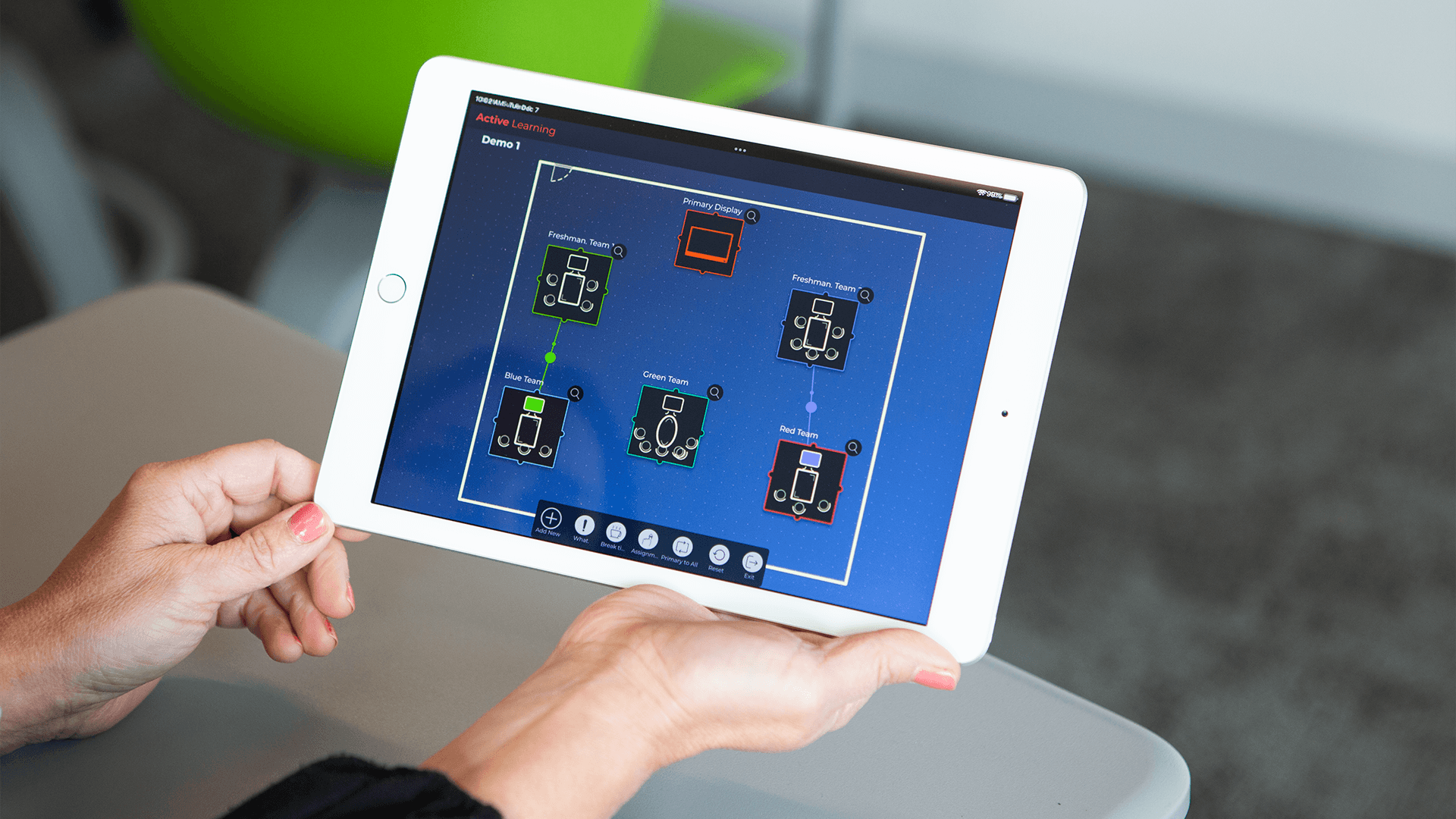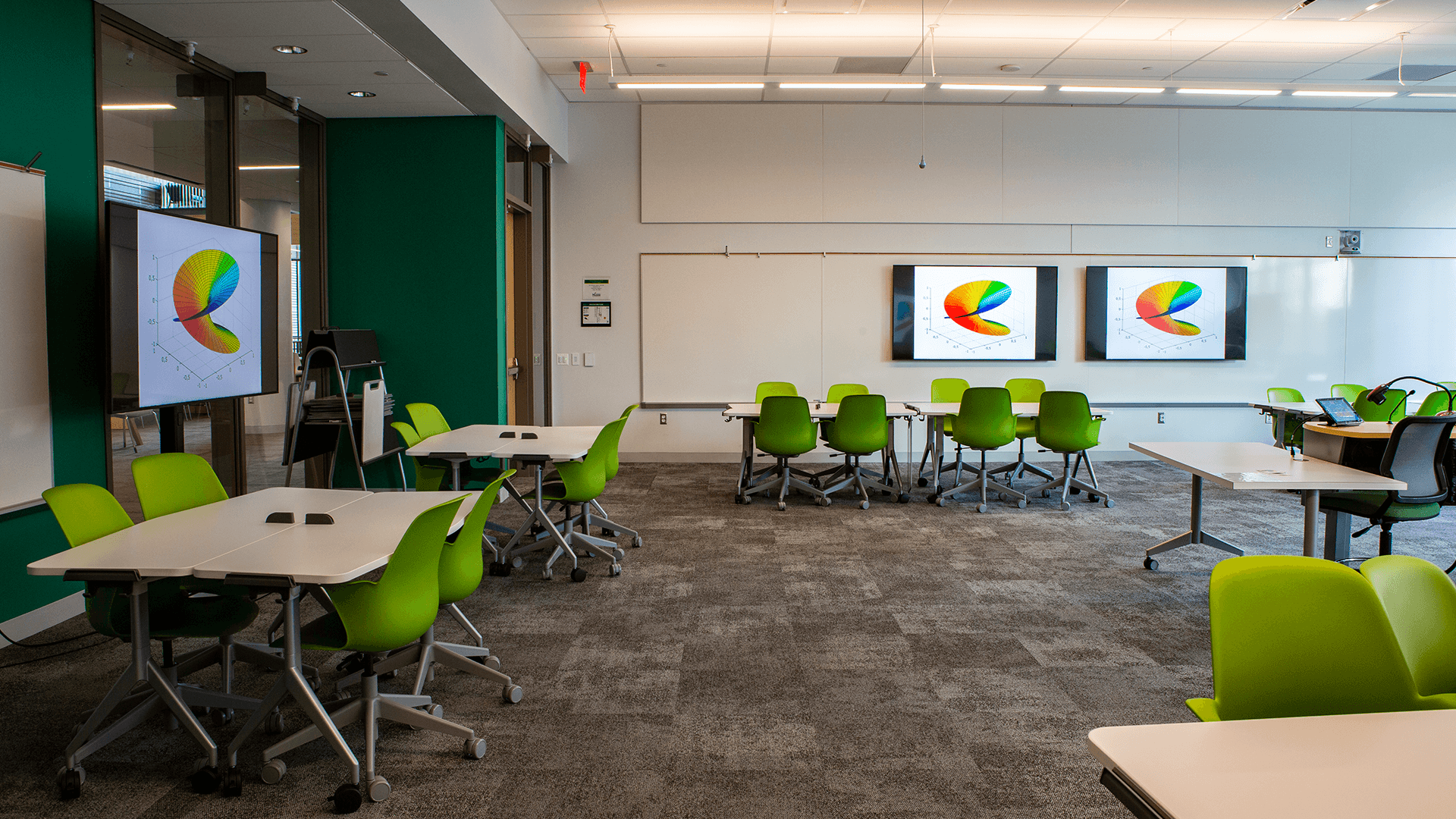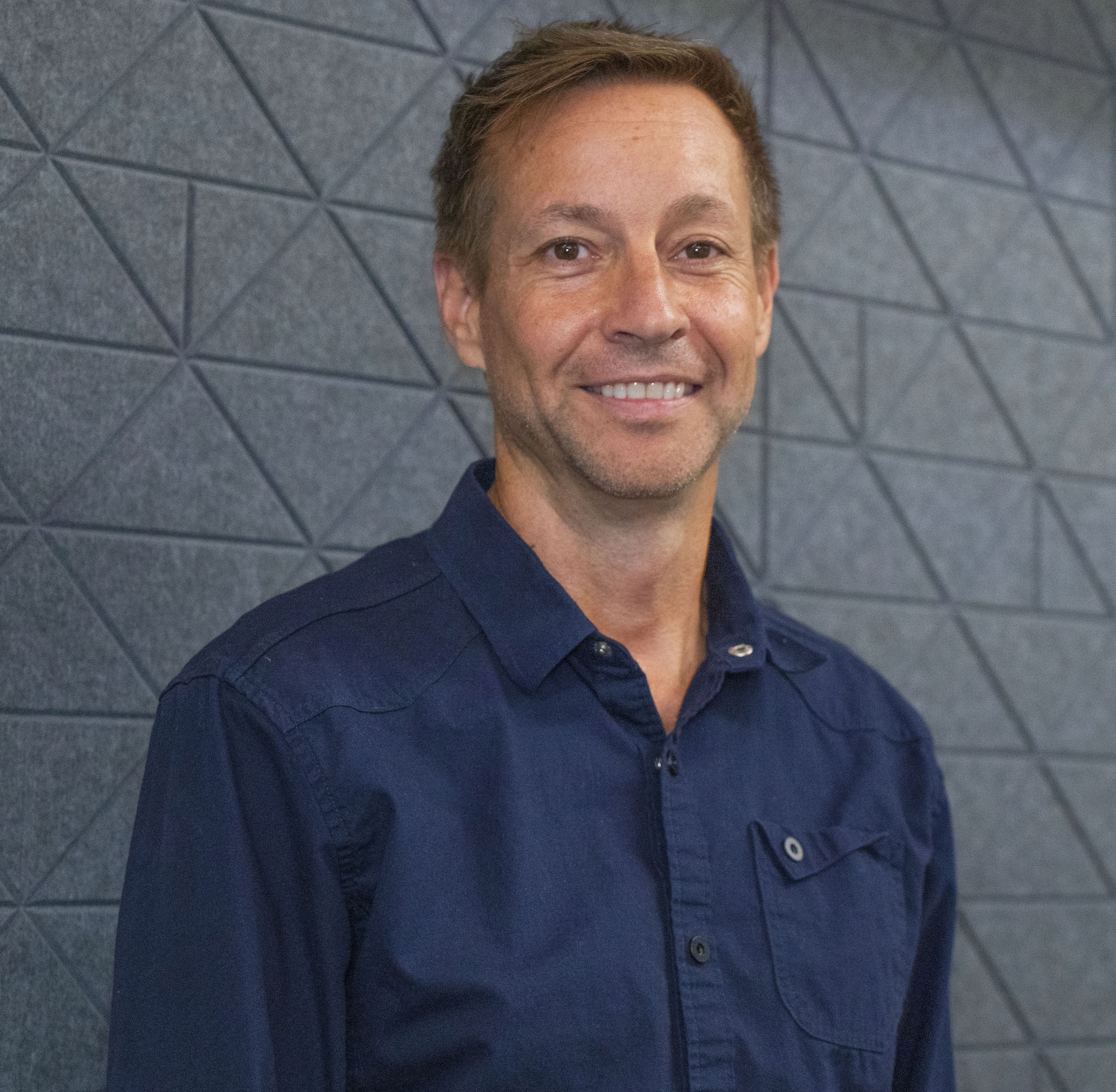Horizon Hall is aptly named. George Mason University’s new academic building, which opened its doors on the Fairfax Campus in 2021, reminds the community to look forward to the exciting possibilities and innovations ahead.
Part of the Core Campus Project, Horizon Hall is a 218,000-square-foot, six-story structure that ranks as the largest learning-space hub at GMU. The new building houses state-of-the-art active learning classrooms with modular furniture, high-tech conference rooms, multimedia rooms, and the interdisciplinary Mason Innovation Exchange (MIX).
GMU’s stunning Horizon Hall offers much more than the wow factor. It underscores the institution’s mission to keep faculty on the leading edge of innovation and deliver transformative learning experiences that are hands-on, multimodal, and technology rich. To that end, Horizon Hall was carefully constructed to showcase advanced audiovisual (AV) and wireless systems designed to facilitate ideation, collaboration, and student-driven learning.
As a global steward and catalyst for entrepreneurship, GMU also outfitted Horizon Hall with a makerspace, 3D printers, and suite of experiential augmented reality (AR) and virtual reality (VR) tools.
Committed to Active Learning
As part of George Mason University’s strategic plan, staff and faculty are committed to designing and utilizing learning spaces that support active learning. GMU locates “active learning” at the intersection of instructional creativity and student engagement: “Active learning strategies increase student learning and develop instructor flexibility with diverse learning environments. Active learning includes any activity or approach that makes students engage the material through meaningful activities that require that they think about what they are doing and why (Bonwell and Eisen, 1991). There are certain active learning strategies, such as collaborative assignments and undergraduate research, that are also high-impact practices because they have been shown to increase rates of retention and student engagement (Kuh).” (Source: George Mason University)
Challenge
With the active learning mandate in sharp focus, Horizon Hall’s spaces were designed to nurture real-time collaboration, enabled by robust yet agile software and hardware “built right to the learning spaces,” explained Crystal Clemons, M.Ed, Director, Classroom & Lab Technologies at George Mason University. “The learning spaces need to intuitively support multiple professors and multiple pedagogies.”
“We needed all our new technology to accommodate GMU’s mission for active learning,” said Clemons.

Crystal Clemons, M.Ed, Director, Classroom & Lab Technologies at George Mason University
The AV design process was led by Convergent Technologies Design Group (CTDG), while Corbett Technology Solutions (CTSI) was the system integrator for the Horizon Hall project. To avoid static systems and keep the focus on active learning, the AV specialists leveraged the advantages of Mersive Solstice technology to enable wireless collaboration in the new building.
By deploying collaboration solutions like Mersive Solstice, GMU is preparing students for rapidly evolving digital and hybrid workplaces, while adopting active-learning pedagogies that foreground teamwork. Integrated within rigorous course designs, the Solstice systems help students hone their metacognitive and creative problem-solving skills as they give individuals and small groups agentive control over their learning processes.

Design Process

Bill Holaday, Principal of Convergent Technologies Design Group
From the initial vision programming meetings to Horizon Hall’s ribbon cutting, Convergent Technologies Design Group (CTDG) worked in concert with key stakeholders: the project architect, Perkins&Will; CTSI; and GMU’s AV and IT Leads, including Crystal Clemons. The planning guaranteed that the project had sufficient infrastructure, conduits, back boxes, and pathways for high-impact AV.
As Bill Holaday, Principal of CTDG, recalled, “We first met with GMU more than five years ago to kick off this project on the design side.”
“One of the great things our firm brought to the project was our dynamic working relationship with the Perkins&Will design team over the past two decades on programmatically similar project types,” said Paul Corraine, Founding Principal at CTDG.
Solution

Ajinkya Patil, CTS-I, CTS-D, Convergent Technologies Design Group
In the active collaboration/active learning classrooms, an adaptable setup was crucial, said Holaday. “The flexibility is there to arrange rooms in different ways to enable more collaboration between students,” he said.
The AV team centered mobile devices in all aspects of the project, “Designing systems that could fully support BYOD (bring your own device),” stated CTDG’s Ajinkya Patil, CTS-I, CTS-D. “That is why the wireless infrastructure needs to be there; the AV devices need to be compatible with this BYOD logic.”
“That’s where Mersive is a great product to use in Horizon Hall’s 28 active learning classrooms, 15 collaboration spaces, 9 conference rooms, and 8 huddle spaces,” Patil said. “Now, almost all of those spaces are wireless-presentation capable.”
Results
In total, 165 Mersive Solstice Pods (SP-8100-E5 Wireless Collaboration Gateway, Enterprise Edition) were specified in Horizon Hall. Connected to displays, Solstice collaboration software integrated on a dedicated hardware platform, ensures seamless collaboration, group work, and active learning, all with secure BYOD access. In addition to the wireless engagement it offers, Solstice builds in native integrations, such as video conferencing, digital signage playback, and centralized monitoring and management.
Due to its many benefits for instructors and students—with a measurable ability to meet course learning objectives—GMU decided to “standardize on Mersive,” Clemons said. She has observed the “great results” since Horizon Hall opened, including the ability to bring remote students into active learning course designs.
Benefits for the Tech Team
Mersive’s Solstice lets multiple students and faculty use their smartphones, tablets, or laptops to connect and share content in real time, via a display over Horizon Hall’s IP network. “The technology's there to accommodate any type of collaboration,” Clemons stated. “And if they need to bring in a professor from another institution, or connect to other students remotely, they have the instant ability to do that.”
Since students can share content wirelessly, AV/IT staff don’t have to worry about whether rooms are stocked with enough dongles, adaptors, or connectors.

“Really Engaging”
The forward-thinking culture of GMU demands learning spaces that are as innovative as they are inclusive. “We wanted the ability to maximize the flexibility and affordances of the technology in Horizon Hall to provide immersive, wireless solutions for group collaboration,” Clemons noted. “In Horizon Hall, we also have peripherals tied right into the spaces: multiple displays, cameras, great audio (in both directions). The students can see, hear, and interact with the highest quality. It’s been really engaging.”

Active Learning: What Does the Data Reveal?
“Widespread implementation of high-quality active learning can help reduce or eliminate achievement gaps in STEM courses and promote equity in higher education.”
Source: Proceedings of the National Academy of Sciences, March 2020
“Professors’ use of active learning methods mitigated some of this negative effect [of pandemic-related learning loss].”
Source: National Bureau of Economic Research, October 2020
IP Ready
“In Horizon Hall,” Holaday said, “there are no AV rooms or AV racks [in the learning spaces]. All the AV and the IT telecom rooms are centralized. The audio/video distribution is over the network, and that needed next-level coordination.”
The design and solid infrastructure pathways are key to keeping Horizon Hall relevant and scalable for years to come.
“Knowing that technology will change in the next five to ten years,” Holaday explained, “we plan the riser, the backbones, the conduit pathways, the fiber connectivity. We do this because when things do change, it won’t be a big deal. Good infrastructure planning keeps in mind that you might not need this on day one, but we're going to put a conduit there because, in the future, you might just use it. That’s one of the ways we plan ahead.”
Looking to the Horizon
Clemons, who is also pursuing a PhD in Education, specializing in learning technologies design and research, remarked that she “sees future opportunities” for the Solstice system to accommodate blended asynchronous and synchronous modalities. She believes in the value of “combining active learning design and remote instruction within a responsive HyFlex (hybrid-flexible) framework.” HyFlex is a trend that has rapidly accelerated since the pandemic.
Bill Holaday praised Crystal Clemons and the George Mason University team for “pushing the boundaries—they want to do the next right thing, as far as what it takes to plan exceptional learning spaces.”

Christopher Jaynes, PhD, Mersive CTO and Founder
Mersive prides itself on its ability to deliver effective collaboration solutions today that will also stay relevant long into the future. The company’s deep heritage in education informs its flexible, future-proof sensibility. During his time as a professor, Christopher Jaynes, PhD, Mersive CTO and Founder, discovered that accessibility and usability were essential for the deployment of classroom technologies. That’s why Mersive designed Solstice to work with virtually any device and engage the broadest continuum of user familiarity, from the most tech savvy to tech skeptical contingents.
“It’s well known that active learning is fantastic teaching and learning model for both students and faculty – it increases engagement, achieves measurable success, and can even create communities of learners that go beyond the classroom.” said Jaynes, “Our goal at Mersive has been to facilitate that process with intuitive technology that enhances this collaboration and engagement. Mersive was founded out of the academic community – so we’re passionate about removing the traditional barriers to engaged learning. Cost, complexity, and poor user experience has limited this type of learning to elite rooms. I’m excited to see that we’re able to unlock collaborative and active learning for a larger number of learning spaces.”
Active Learning Scholarship
Kuh, George. “High-Impact Educational Practices: A Brief Overview,” Association of American Colleges & Universities
Bonwell, Charles C. and James A. Eison, Active Learning: Creating Excitement in the Classroom, ASHE-ERIC Higher Education Report No. 1. The George Washington University: Washington, D.C., 1991.
Freeman, Scott et al. “Active Learning Increase Student Performance in Science, Engineering, and Mathematics.” PNAS: Proceedings of the National Academy of Sciences of the United States of America, vol 111, no. 23 (2014): 8410-8415.
MORE INFO
- CORBETT TECHNOLOGY SOLUTIONS (CTSI)
- CONVERGENT TECHNOLOGIES DESIGN GROUP
- GEORGE MASON UNIVERSITY
- INTEGRAL GROUP
- MERSIVE TECHNOLOGIES
- PERKINS&WILL

